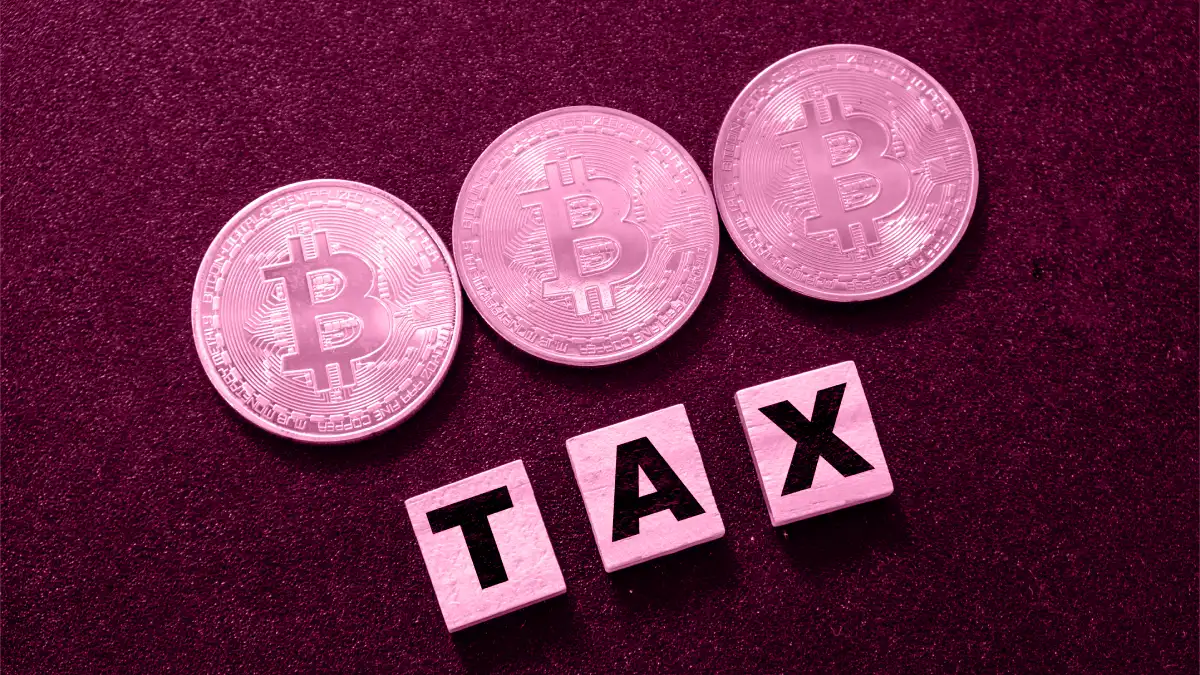As we all know Cryptocurrencies have revolutionized traditional financial systems, providing investors with an alternative option for investment but at the same time, it comes with numerous questions regarding taxation. When it comes to filing your crypto taxes in India, it’s super important to pick the right form. Think of it as choosing the best tool for the job. If you don’t, you might get a headache from incorrect reporting and possible fines. So, let’s keep it simple and figure out whether you need ITR-3 or ITR-2 for your crypto adventures. As an Indian crypto investor, understanding how to file taxes correctly is crucial. Let’s break it down:
Understanding the Crypto Tax Landscape:
To navigate the realm of crypto taxes effectively, you must grasp how tax authorities categorize your crypto activities. This primarily hinges on your intentions and how frequently you engage in trading:
Business Income:
- If you’re involved in frequent trades with significant volumes, it indicates a business-like approach to crypto trading.
- In such cases, your crypto earnings are classified as business income and must be reported in your Income Tax Return Form-3 (ITR-3). This form is specifically designed for reporting business income.
Capital Gains:
- Conversely, if your primary goal is to hold onto your crypto investments for long-term appreciation, your earnings come under the category of capital gains.
- These gains are to be reported in your Income Tax Return Form-2 (ITR-2), utilizing the dedicated Schedule VDA (Voluntary Disclosure of Assets). This schedule is specifically designed for reporting capital gains from various assets, including cryptocurrencies.
Gathering Your Crypto Information
Before diving into tax filing, gathering all the details about your cryptocurrency transactions is crucial. This collection of information is essential for ensuring accurate and efficient tax reporting. Here’s what you’ll need to collect:
- Transaction Dates: Make sure you have the precise date for every crypto transaction you’ve made, whether it’s a purchase, sale, or trade.
- Transaction Types: Clearly distinguish between different types of transactions, such as purchases, sales, exchanges, or any other relevant activities related to your crypto holdings.
- Crypto Amounts: Quantify the amount of cryptocurrency involved in each transaction. This includes the specific quantity of crypto tokens bought, sold, or traded.
- Rupee Value: Record the value of cryptocurrency in rupees at the time of each transaction. This ensures accurate calculations for tax purposes and helps in determining gains or losses accurately.
Calculating Your Taxable Gains from Crypto:
When you invest in cryptocurrencies, it’s important to understand how to calculate your capital gains accurately. These gains represent the profits you make from selling your cryptocurrencies at a higher price than what you initially paid for them. Properly calculating your taxable gains ensures that you comply with tax laws and accurately report your income to the tax authorities. Here’s how you can do it
- Subtract Cost of Acquisition: Start by subtracting the cost of acquisition for each cryptocurrency transaction. This includes not only the purchase price but also any associated trading fees incurred during the transaction.
- Determine Sale Price: Next, determine the sale price for each transaction. This is the amount you received when you sold or traded your cryptocurrency.
- Calculate Net Gains/Losses: Once you have both the cost of acquisition and the sale price for each transaction, subtract the former from the latter. This will give you the net gain or loss for each individual transaction.
- Sum Up Total Gains/Losses: Finally, sum up all the net gains and losses across all your cryptocurrency holdings. This will provide you with the total taxable capital gain or loss for the related tax period.
Choosing The Right ITR Form:
Choosing the correct Income Tax Return (ITR) form is essential for accurately reporting your cryptocurrency transactions. Here’s a detailed breakdown to guide you in making the right choice:
- ITR-3:
- Think of ITR-3 as your shield for reporting business income, especially if you’re involved in frequent crypto trades.
- Use this form to report your crypto income under the appropriate business income head. It’s designed for individuals with income from business or profession, making it ideal for those engaged in active trading activities.
- ITR-2:
- If you’ve been holding onto your cryptocurrency investments for long-term appreciation, ITR-2 is the form for you.
- Report your capital gains from crypto investments using ITR-2, making use of the dedicated Schedule VDA (Voluntary Disclosure of Assets). This schedule is specifically designed for reporting capital gains from various assets, including cryptocurrencies.
The Income Tax e-Filing Portal:
With your data and chosen form ready, it’s time to enter the arena – the Income Tax e-Filing Portal. Log in using your PAN credentials and prepare to conquer the tax filing quest. The portal offers different sections based on your tax profile. Are you an individual, a company, or a representative filing for someone else? Choose your category wisely, for it determines the forms and functionalities available.
- Access the Portal: Visit the Income Tax e-Filing Portal and log in using your PAN (Permanent Account Number) credentials. If you haven’t registered yet, you’ll need to create an account first.
- Gather Your Data: Before you start filling out the forms, ensure you have all the necessary information and documents ready. This includes details of your crypto transactions, income sources, and any other relevant financial records.
- Choose Your Form: Select the appropriate ITR form based on your income sources and financial activities. If you’re unsure which form to use, consult with a tax advisor or refer to the guidelines provided by the Income Tax Department.
- Fill in the Details: Carefully enter all the required details in the respective sections of the chosen ITR form. Double-check the accuracy of the information before proceeding to the next step.
ITR-3 for Business Income:
If you engage in frequent crypto trades with substantial volume, suggesting a business-like approach, then ITR-3 becomes your shield. Remember, under the current Indian tax framework, frequent crypto trading translates to business income. Here’s how you wield this form effectively:
- Reporting Crypto as Business Income: Within ITR-3, you’ll find multiple business income schedules. Identify the most relevant schedule based on your crypto activities (e.g., income from trading, mining, staking, etc.).
- Detailed Transaction Tracking: Be meticulous! Record each crypto transaction (buy, sell, trade) separately in the chosen schedule. Ensure you capture essential details like:
- Date of transaction
- Type of transaction (purchase, sale, exchange)
- Specific cryptocurrency involved
- Amount of crypto
- Rupee value at the transaction date
- Associated costs (trading fees, gas fees, etc.)
- Calculating Net Income: For each transaction, calculate the net gain/loss by subtracting the cost of acquisition from the sale price. Remember to factor in all associated costs.
- Accurate Reporting: Aggregate the net gains/losses across all your crypto transactions to arrive at your total business income from crypto. This aggregated figure goes into the designated section of the chosen business income schedule within ITR-3.
ITR-2 for Capital Gains:
If you ever held crypto for long-term appreciation, aiming for capital gains, then ITR-2 becomes your trusted companion. However, remember to categorize your gains further:
- Short-Term Capital Gains (STCG): Held for less than 36 months, taxed at a flat 30%.
- Long-Term Capital Gains (LTCG): Held for more than 36 months, enjoy an exemption of up to ₹1 lakh, then taxed at 20%.
Here’s how to report them in ITR-2:
- Dedicated Schedule VDA: The introduction of Schedule VDA is a boon for crypto investors. Use this schedule to report both STCG and LTCG arising from your crypto holdings.
- Segregating Gains: Clearly differentiate between STCG and LTCG by using the designated sections within Schedule VDA. Each section requires similar details as those mentioned for ITR-3, along with the holding period for LTCG.
- Tax Implications: Remember the different tax rates for STCG and LTCG. Apply the appropriate rate to your net gains to calculate your tax liability.
Important Reminders:
Filing taxes on your cryptocurrency holdings comes with its own set of complexities. Here are some key reminders to keep in mind:
- Tax Rates: Refer to the STCG and LTCG rates mentioned earlier.
- TDS Deduction: If TDS has been deducted from your crypto income, claim the credit while filing your return.
- Seek Professional Guidance: Considering the complexity of crypto taxes, especially for intricate cases or high-value transactions, seeking expert advice from a qualified tax professional is essential. There are many software that you can use one of them is catax which streamlines tax preparation with specialized techniques designed to track transactions, calculate taxes, and generate reports.
FAQs on Filing Crypto Tax Return in Income Tax Portal
The deadline for filing income tax returns for the Financial Year 2022-23 (AY 2023-24) was July 31, 2023. If missed, a belated return can be filed by December 31, 2023. For the Financial Year 2023-24 (AY 2024-25), the upcoming tax season, the deadline is July 31, 2024.
Income generated from cryptocurrency can be classified either as capital gains or business income, depending on whether it’s held for investment or trading activities. As advised by Taxmann, such income should be reported under ‘Schedule VDA’ in either ITR-2 or ITR-3.
Section 194S levies 1% Tax Deducted at Source (TDS) on the transfer of crypto assets from July 01, 2022, if the transactions exceed ₹50,000 (or even ₹10,000 in some cases) in the same financial year. Crypto tax applies to all investors, whether private or commercial, who transfer digital assets during the year.
The form to be used depends on the nature of your crypto income. If your cryptocurrency transactions are considered capital gains, you may need to file using Form ITR-2 or ITR-3. However, if your crypto activities are considered business income, Form ITR-3 may be applicable.
If an individual forgets to file details of crypto gains in the ITR within the deadline of 31 July, this would be treated as under reporting or misreporting of income, and invites a penalty of up to 200% of the tax evaded.



